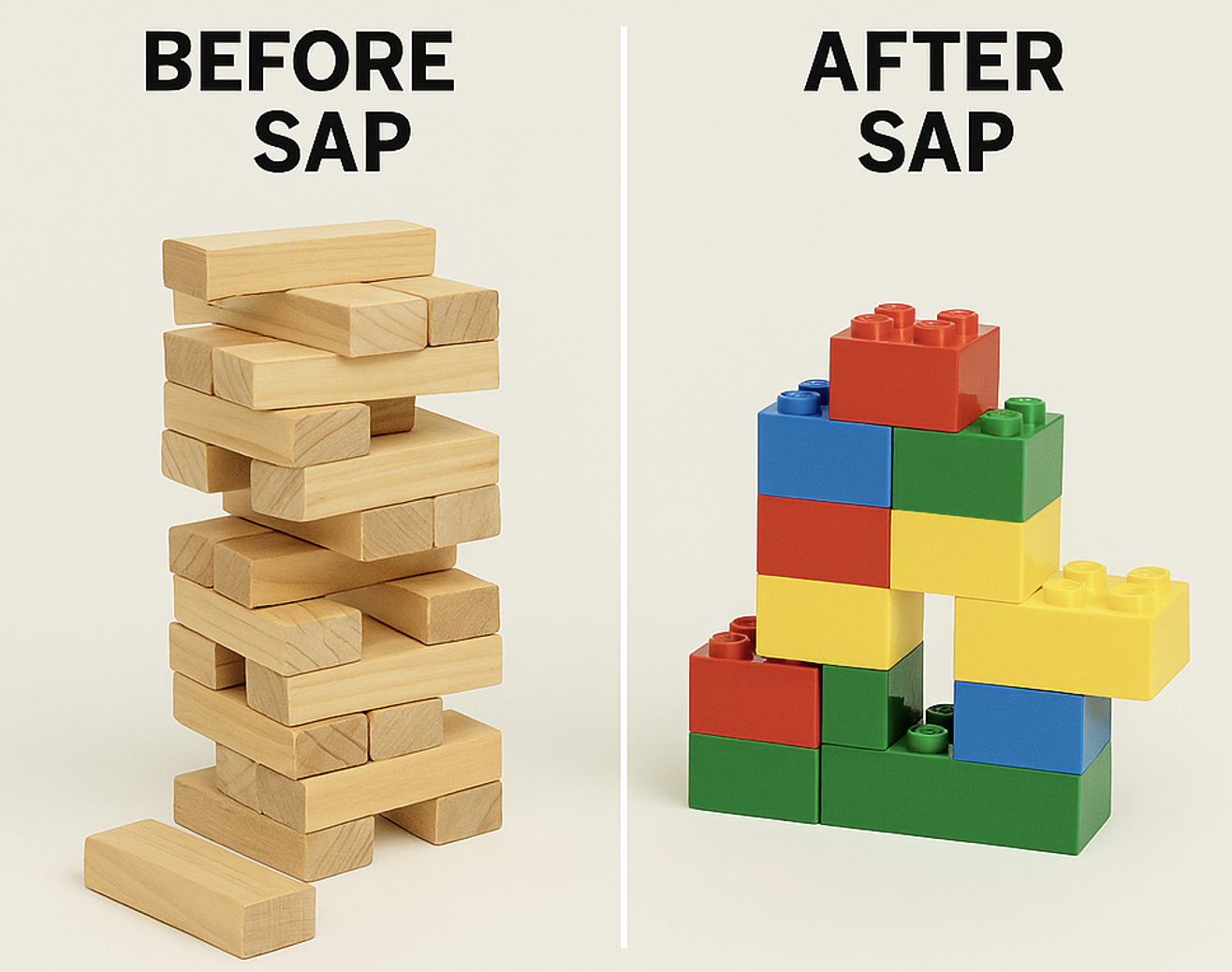
- /
- By Bolders
In today’s fast-paced digital landscape, businesses are under constant pressure to stay efficient, agile, and competitive. This is where SAP (Systems, Applications, and Products in Data Processing) comes into play. As one of the world’s leading enterprise resource planning (ERP) software providers, SAP helps businesses of all sizes streamline operations, improve data visibility, and drive smarter decisions.
But what does SAP really do for a business? And what’s the difference between life before SAP and after SAP?
What Does SAP Do?
SAP integrates all core business processes—including finance, HR, procurement, supply chain, sales, and customer service—into one unified system. This provides a centralized platform where data flows seamlessly across departments, eliminating silos and boosting collaboration.
Key SAP capabilities include:
- Real-time analytics and reporting
- Automation of repetitive tasks
- Standardized business processes
- Compliance and risk management tools
- Mobile and cloud accessibility
- Industry-specific solutions (e.g., manufacturing, retail, healthcare)
Before SAP: The Struggles of a Disconnected Business
Before SAP, many companies operate with:
- Isolated systems that don’t communicate with each other
- Manual data entry and paperwork, leading to errors and wasted time
- Limited visibility into performance, causing poor decision-making
- Duplicate processes across departments
- Difficulties in scaling due to lack of automation and flexibility
Imagine a finance team using spreadsheets, a sales team using a CRM that doesn’t talk to inventory systems, and HR tracking employees in a separate tool. It creates chaos, delays, and frustration.
After SAP: A Unified, Intelligent Enterprise
After implementing SAP, businesses typically experience:
- Real-time access to accurate data across all departments
- Improved efficiency through automated workflows
- Better collaboration as teams work from the same platform
- Stronger compliance and audit readiness
- Scalability to support growth and expansion
- Faster decision-making backed by analytics and forecasting
In short, SAP turns data into actionable insights, reduces operational costs, and empowers employees to focus on what matters most.
A Simple Example: Sales Order Process
Before SAP:
- Sales receives an order and emails it to procurement.
- Procurement manually checks stock and forwards it to finance.
- Finance creates an invoice in a separate tool.
- The customer has to wait days for confirmation.
After SAP:
- Sales enters the order into SAP.
- The system automatically checks inventory, updates stock, and triggers invoicing.
- The customer gets immediate confirmation and accurate delivery estimates.
The Bigger Picture: SAP as a Digital Transformation Partner
SAP doesn’t just digitize your operations—it redefines how your business runs. With cloud-based solutions like SAP S/4HANA, SAP SuccessFactors, and SAP Business Technology Platform, companies can become truly intelligent enterprises that adapt quickly to market changes.
SAP is more than just software—it’s a strategic investment in the future of your business. The transition from a disconnected, manual environment to a fully integrated, intelligent system can lead to higher productivity, better customer satisfaction, and long-term growth.
So, whether you’re a growing startup or a global enterprise, SAP can be the game-changer that transforms your business from the inside out. Do you have any questions about Bolders Consulting Group’s services? Or, are you looking for more information regarding our solution development services? Contact Bolders today to learn how we can help transform your business with SAP technology!

